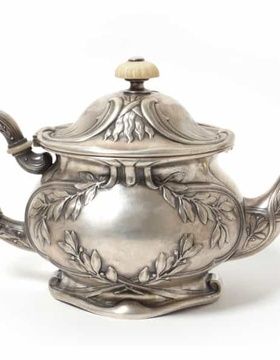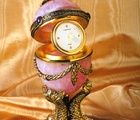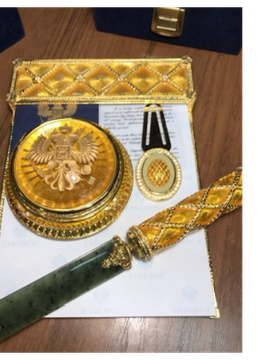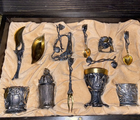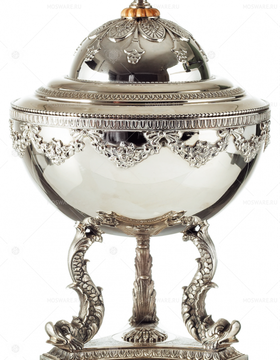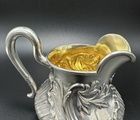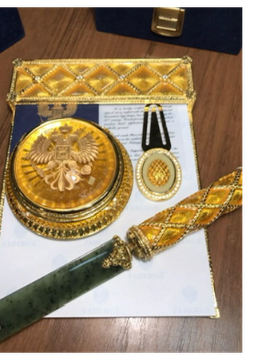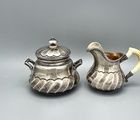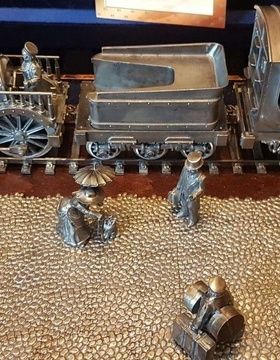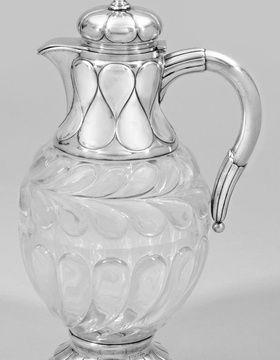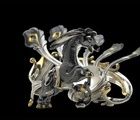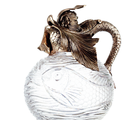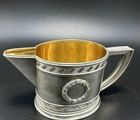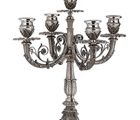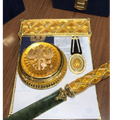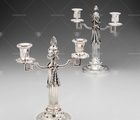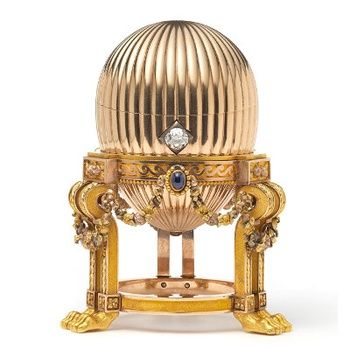
Ювелирный дом Фаберже известен по всему миру благодаря пасхальным изделиям, которые выпускались в Российской Империи в середине XIX века. Однако история бренда куда увлекательнее и интереснее, чем можно себе представить.
Семья Фаберже начала своё существование ещё в XVII веке, произошло это во Франции. Правда, тогда её члены носили фамилию Фаври и относились к протестантской вере. Именно этот факт повлиял на видоизменение фамилии до Фабрьер и побег семьи из Франции.
Из всех представителей фамилии только один человек всерьёз увлёкся ювелирным искусством. Звали его Густав Фаберже. Он не был потомственным ювелиром и сначала совершенно ничего не знал в этой области. В возрасте 16-ти лет он приехал в Россию, чтобы познавать азы ювелирного дела, а к 1841 году, когда ему было уже 27, стал полноценным специалистом.
Годом основания бренда принято считать 1842 год. Он стал ключевым для дальнейшего развития имени Фаберже. В этот период Густав Фаберже открывает ювелирный магазин в одном из самых престижных районов Санкт-Петербурга
30 мая 1846 года у Густава Фаберже родился сын Карл, который впоследствии и прославил ювелирный дом своими шедеврами. А удалось это ему благодаря невероятному кругосветному путешествию. В возрасте 18-ти лет молодой Фаберже отправился в круиз, чтобы узнать ювелирные секреты и техники, которые использовали по всему миру на тот момент. Он поглощал информацию, как губка впитывает воду, и благодаря этому к 26-ти годам уже стал маститым ювелиром.
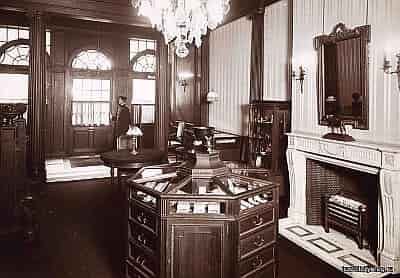 Интерьер первого магазина Фаберже в Санкт-Петербурге
Интерьер первого магазина Фаберже в Санкт-Петербурге
Густав Фаберже мигрировал из России, когда Карлу было 14 лет, но мысли о Родине всё же не покидали юношу. И вот, когда Карл набрался достаточно опыта, он решил вернуться в родную страну. Произошло это в 1872 году, а спустя 10 лет молодой человек стал во главе семейного дела.
Один из сыновей Карла Фаберже, Агафон, тоже выбрал ювелирную стезю, решив пойти по стопам отца. В 1882 году он был удостоен звания мастера ювелирных дел. Однако всю жизнь ювелирному делу он посвящать не стал.
Эмигрировав из-за революционных гонений в Финляндию, остаток жизни он провёл очень скромно и жил за счёт продажи своей коллекции марок.
Официальное сотрудничество Карла Фаберже с императорской семьёй началось в 1885 году, когда восхищенный мастерством ювелира Александр III сделал ему первый заказ. Император желал сделать приятный сюрприз своей супруге, и велел изготовить драгоценное пасхальное яйцо, которое напоминало бы Марии Фёдоровне о родине.
Результат превзошёл все ожидания, и тогда было решено делать подобные сувениры ежегодно, и даже по несколько штук в год. Таким образом для царской семьи было изготовлено 54 яйца, каждое из которых имело свой уникальный дизайн.
Всего ювелирный Дом Фаберже выпустил 71 яйцо
А в 2015 году порадовал своих поклонников ещё одним уникальным экземпляром. Известно, что сегодня яйца Фаберже хранятся в 9-ти странах мира. Наибольшее их количество находится в России (25 штук), немного меньше — в Америке (22 штуки), в остальных странах хранится по 1−3 экземплярам.
Судьба 11-ти пасхальных произведений Фаберже до сих пор остаётся неизвестной.
В 2014 году было объявлено об удивительной находке — одно из давно утерянных императорских яиц Фаберже было случайно обнаружено на блошином рынке в США. Стоимость яйца составила 33 миллиона долларов.
После советской революции Дом Фаберже перестал быть одним из самых влиятельных на ювелирном рынке. В одно время под маркой Fabergе работало сразу две фирмы. Она находилась в Америке и занималась производством парфюмов, а вторая была зарегистрирована сыновьями Карла Фаберже. Но обе фирмы кочевали от одного владельца к другому.
Лишь в 2007 году бизнесмен из Южной Африки, Брайан Гилбертсон (Brian Gilbertson) выкупил все права на имя Фаберже. Он поставил перед собой цель — возродить былую славу ювелирного дома. Сегодня бренд получил новую жизнь и активно участвует в мировой ювелирной жизни.
Необыкновенными произведениями Фаберже вдохновился режиссёр из Великобритании Патрик Марк (Patrick Mark). Совместно с компанией Arts Alliance он снял полнометражный документальный фильм о яйцах Фаберже. Кинолента уникальна тем, что в процессе создания фильма съёмочная группа была допущена к самым редким коллекциям сохранившихся шедевров. Их удалось снять детально и показать во всём великолепии.
Фильм получил название «Фаберже: жить своей жизнью»(Fabergé: A Life of Its Own) и уже успел завоевать несколько престижных кинопремий.
Дом Фаберже успел пережить фееричные взлёты и стремительные падение. И, несмотря на это, сегодня бренд Fabergе снова жив, с новыми силами продолжает творить и радовать поклонников прекрасными произведениями ювелирного искусства.
